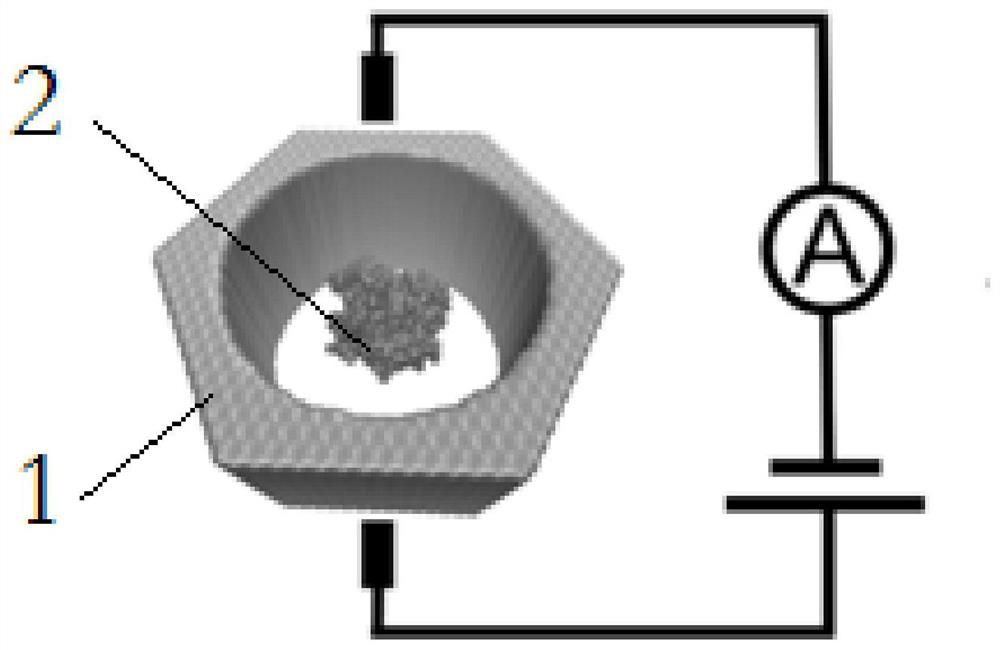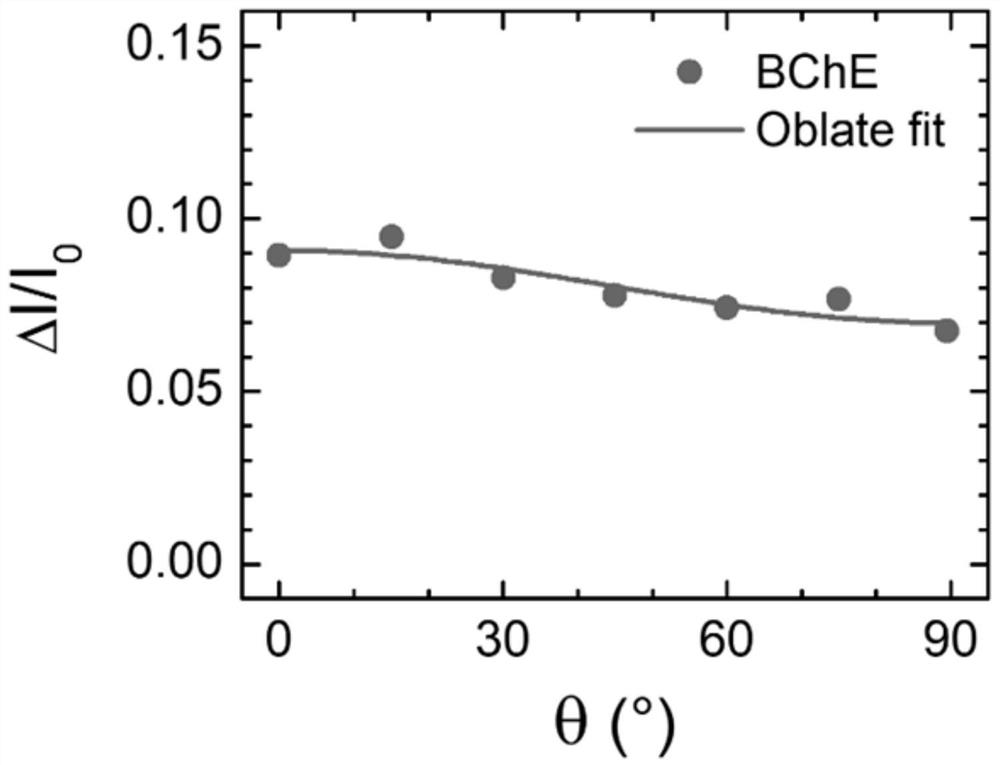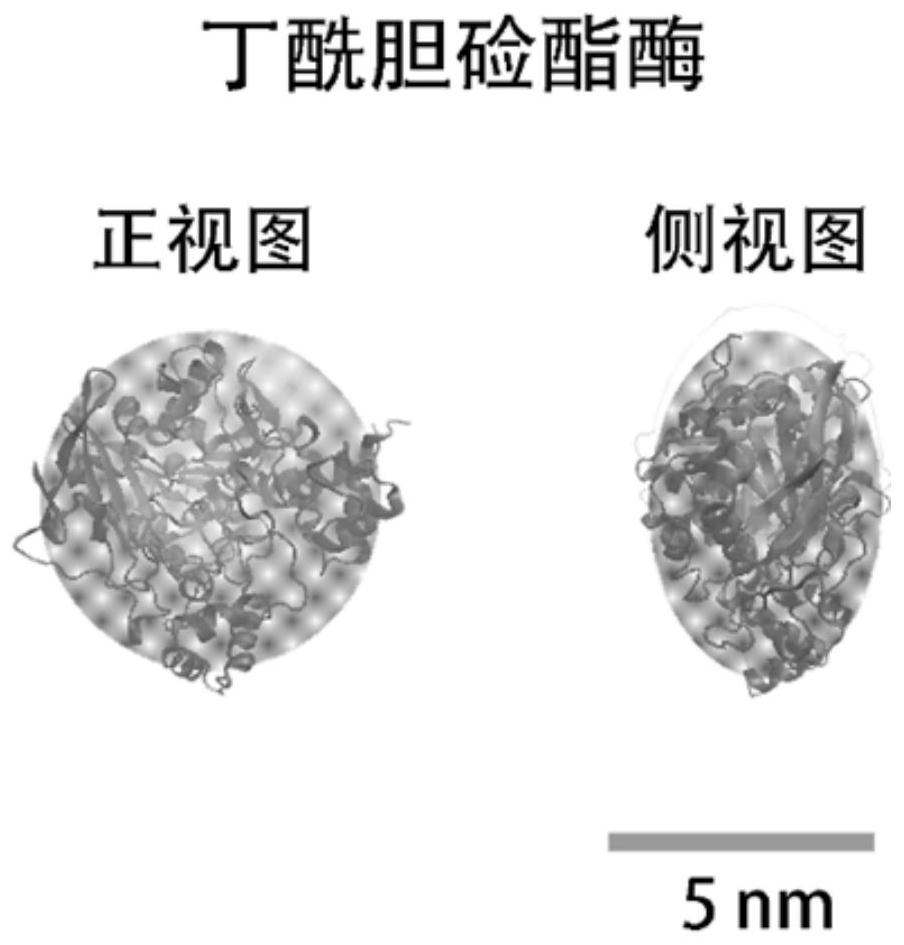Method for estimating protein conformation morphological characteristics based on nanopore via current
- Summary
- Abstract
- Description
- Claims
- Application Information
AI Technical Summary
Problems solved by technology
Method used
Image
Examples
Embodiment 1
[0063] This example is to estimate the shape characteristics of butyrylcholinesterase based on nanopore sensing technology, the principle is as follows figure 1 shown.
[0064] Obtain the two directions with the largest and smallest projected area of butyrylcholinesterase as two special orientations. Place the three-dimensional space structure of butyrylcholinesterase crystal (PDBID: 1P0I) in the three-dimensional space coordinate system, coincide the centroid of the protein with the dot on the coordinate axis, and step along the Z, Y, and X coordinate axes at an angle of 1°. Rotate sequentially along the three coordinate axes, and finally obtain the two special orientations of the protein crystal on the X-Y plane, the orientation of the largest projected area (ID: 73-133-110) and the orientation of the smallest projected area (ID: 0-16-37) .
[0065] Five arbitrary orientations of the three-dimensional structure of butyrylcholinesterase crystals were obtained. Arbitraril...
Embodiment 2
[0078] This example is to estimate the morphology characteristics of acetylcholinesterase based on nanopore sensing technology.
[0079] The two directions with the largest and smallest projected area of acetylcholinesterase were obtained as the two special orientations. The three-dimensional space structure of acetylcholinesterase crystal (PDBID: 3LII) was placed in the three-dimensional space coordinate system, and the centroid of the protein was coincident with the dot on the coordinate axis, and arbitrarily rotated along the Z, Y, and X coordinate axes to obtain 1000 orientations. Among the 1000 random orientations, find out the two special orientations of the protein crystal on the X-Y plane, the orientation of the largest projected area (ID: 65-214-290) and the orientation of the smallest projected area (ID: 134-144-185).
[0080] Obtain 998 arbitrary orientations of the three-dimensional structure of acetylcholinesterase crystals. In the above steps, the orientations...
Embodiment 3
[0100] This example is to estimate the morphology characteristics of high-affinity integrins based on nanopore sensing technology.
[0101] The two directions with the largest and smallest projected areas of high-affinity integrins were obtained as two special orientations. The integrin protein (PDBID: 3k6s) was processed by stretching molecular dynamics to obtain its high-affinity conformation. Place the three-dimensional space structure of the conformation of the high-affinity state in the three-dimensional space coordinate system, the centroid of the protein coincides with the dot of the coordinate axis, and step along the three coordinate axes at an angle of 1° along the Z, Y, and X coordinate axes Rotate sequentially respectively, and finally obtain two special orientations of the protein crystal on the X-Y plane, the orientation of the largest projected area and the orientation of the smallest projected area.
[0102] Obtain 5 random orientations of the three-dimensiona...
PUM
 Login to View More
Login to View More Abstract
Description
Claims
Application Information
 Login to View More
Login to View More - R&D Engineer
- R&D Manager
- IP Professional
- Industry Leading Data Capabilities
- Powerful AI technology
- Patent DNA Extraction
Browse by: Latest US Patents, China's latest patents, Technical Efficacy Thesaurus, Application Domain, Technology Topic, Popular Technical Reports.
© 2024 PatSnap. All rights reserved.Legal|Privacy policy|Modern Slavery Act Transparency Statement|Sitemap|About US| Contact US: help@patsnap.com










